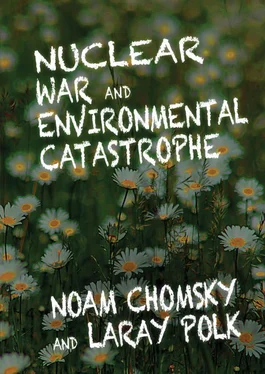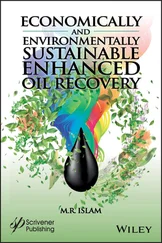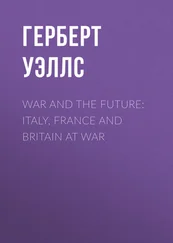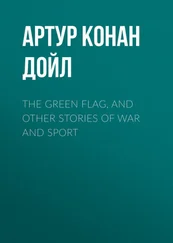There is another possibility that, I think, is not to be dismissed: nuclear terror. Like a dirty bomb in New York City, let’s say. It wouldn’t take tremendous facility to do that. I know US intelligence or people like Graham Allison at Harvard who works on this, they regard it as very likely in the coming years—and who knows what kind of reaction there would be to that. So, I think there are plenty of possibilities. I think it is getting worse. Just like the proliferation problem is getting worse. Take a couple of cases: In September 2009, the Security Council did pass a resolution, S/RES/1887, which was interpreted here as a resolution against Iran. In part it was, but it also called on all states to join the Non-Proliferation Treaty. That’s three states: India, Pakistan, and Israel. The Obama administration immediately informed India that this didn’t apply to them; it informed Israel that it doesn’t apply to them. [46] UN Security Council Resolution 1887 was unanimously approved on September 24, 2009. Two days later, in Pittsburgh, PM Manmohan Singh told the press Pres. Obama had assured him the resolution—which calls on nonmembers of the NPT to join—wasn’t aimed at India, and that the “US commitment to carry out its obligations under the civil nuclear agreements… remains undiluted.” On October 2 Israeli officials said Obama had reassured them that the four-decade-old ambiguity policy that allows “Israel to keep a nuclear arsenal without opening it to international inspections” remained in effect. “NPT Resolution Not Directed against India: US,” Indo-Asian News Service, September 26, 2009; Eli Lake, “Obama Agrees to Keep Israel’s Nukes Secret,” Washington Times , October 2, 2009.
If India expands its nuclear capacity, Pakistan almost has to; it can’t compete with India with conventional forces. Not surprisingly, Pakistan developed its nuclear weapons with indirect US support. The Reagan administration pretended they didn’t know anything about it, which of course they did. [47] On Reagan-Zia alliance and nuclear program, see note 3, chap. 2.
India reacted to resolution 1887 by announcing that they could now produce nuclear weapons with the same yield as the superpowers. [48] James Lamont and James Blitz, “India Raises Nuclear Stake,” Financial Times , September 27, 2009.
A year before, the United States had signed a deal with India, which broke the pre-existing regime and enabled the US to provide them with nuclear technology—though they hadn’t signed the Non-Proliferation Treaty. That’s in violation of congressional legislation going back to India’s first bomb, I suppose around 1974 or so. The United States kind of rammed it through the Nuclear Suppliers Group, and that opens a lot of doors. China reacted by sending nuclear technology to Pakistan. And though the claim is that the technology for India is for civilian use, that doesn’t mean much even if India doesn’t transfer that to nuclear weapons. It means they’re free to transfer what they would have spent on civilian use to nuclear weapons. [49] Prior to Pres. Bush’s nuclear deal with India in 2006, the Nuclear Suppliers Group (NSG) functioned as a “relatively effective nonproliferation cartel.” The NSG grew out of a secret meeting between US officials and nuclear technology suppliers in 1975 in response to India’s first nuclear detonation a year earlier. The meeting established controls on the sale of flagged items and an agreement to bar sales to non-nuclear-weapon states for use at sites outside the purview of IAEA inspection. Bush allowed the selling of nuclear reactors, fuel, and technology to a country that maintains at least eight facilities kept off-limits to inspection. As a consequence, the move compromised a secondary system—the NPT as primary—of nonproliferation checks and balances. Cirincione, Bomb Scare , 37–38.
And then comes this announcement in 2009 that the International Atomic Energy Agency has been repeatedly trying to get Israel to open its facilities to inspection. The US along with Europe usually has been able to block it. And more significant is the effort in the international agencies to try to move toward a nuclear-weapon-free zone in the Middle East, which would be quite significant. [50] During the IAEA General Conference in 2009, back-to-back resolutions were adopted pertaining to the NPT and the establishment of a nuclear-weapon-free zone in the Middle East. Resolution 16 addresses the Middle East in general; it passed by a vote of 103–0. Resolution 17 specifically addresses Israel. It passed by a narrow margin of 49–45 with the “vote split among Western and developing nation lines.” Upon passage, chief Israeli delegate David Danieli told the chamber, “Israel will not cooperate in any matter with this resolution.” IAEA General Conference, GC(53)/RES/16 and RES/17, September 2009; Sylvia Westall, “UN Body Urges Israel to Allow Nuclear Inspection,” Reuters, September 18, 2009.
It wouldn’t solve all the problems, but whatever threat Iran may be assumed to pose—and that’s a very interesting question in itself, but let’s suppose for the moment that there is a threat—it would certainly be mitigated and might be ended by a nuclear-weapon-free zone, but the US is blocking it every step of the way. [51] A nuclear-weapon-free zone (NWFZ) in the Middle East was first proposed in 1962 by a group of Israeli intellectuals, the Committee for the Denuclearization of the Middle East, followed by a joint Egyptian-Iranian General Assembly resolution in 1974. The resolution has passed every year since, though numerous obstacles have prevented the zone from being enacted. “Scientists Call for Nuclear Demilitarization in the Region,” Ha’aretz (Hebrew), July 25, 1962; Nabil Fahmy and Patricia Lewis, “Possible Elements of an NWFZ Treaty in the Middle East,” Disarmament Forum , no. 2 (2011): 39–50. On the US and collapse of the 2012 Helsinki Conference, see Noam Chomsky, “The Gravest Threat to World Peace,” Truth-Out.org , January 4, 2013.
Now that Iran’s reactor at Bushehr is running, the current fear is that they’re going to use the plutonium produced from the fuel cycle to make weapons. The questions raised about Iran’s possible nuclear weapons program are similar to those asked of Israel— [52] In December 1960 the US government submitted five questions to Israel regarding its possible nuclear weapons program: “(1) What are present GOI (government of Israel) plans for disposing of plutonium which will be bred in new reactor? (2) Will GOI agree to adequate safeguards with respect to plutonium produced? (3) Will GOI permit qualified scientists from the IAEA or other friendly quarters visit new reactor? If so, what would be earliest time? (4) Is a third reactor in either construction or planning stage? (5) Can Israel state categorically that it has no plans for developing nuclear weapons?” Avner Cohen, Israel and the Bomb (New York: Columbia University Press, 1998), 93–94.
Since the 1960s. And in fact, the Nixon administration made an unwritten agreement with Israel that it wouldn’t do anything to compel Israel, or even induce them, to drop what they call their ambiguity policy—not saying whether or not they have them. [53] On September 26, 1969, a policy of Israeli nuclear ambiguity was agreed upon by Pres. Nixon and PM Golda Meir. It remained secret until revealed by journalist Aluf Benn in 1991. Avner Cohen and Marvin Miller, “Bringing Israel’s Bomb Out of the Basement: Has Nuclear Ambiguity Outlived Its Shelf Life?,” Foreign Affairs , September/October 2010. Cohen has drawn parallels between Israel’s policy and Iran’s possible nuclear ambitions: “It is straddling the line, and in my opinion, Iran wants to, and can, remain for some time with the status of a state that might or might not have the bomb. Iran is a state of ambiguity.” Noam Sheizaf, “Clear and Present Danger,” Ha’aretz , October 29, 2010.
That’s now very alive because there’s this regular five-year Non-Proliferation Review Conference. In 1995, under strong pressure from the Arab states, Egypt primarily, there was an agreement that they would move toward a nuclear-weapon-free zone and the Clinton administration signed on. It was reiterated in 2000. In 2005 the Bush administration just essentially undermined the whole meeting. They basically said, “Why do anything?”
Читать дальше












